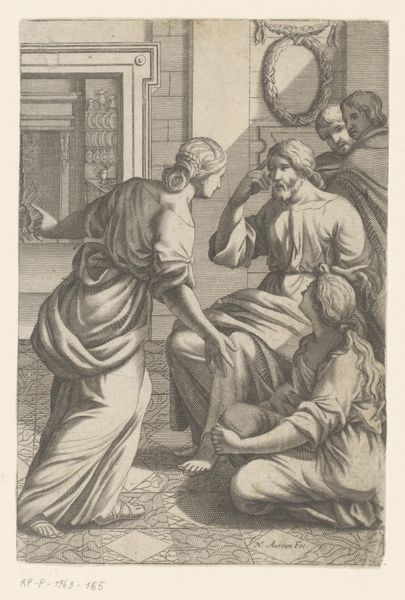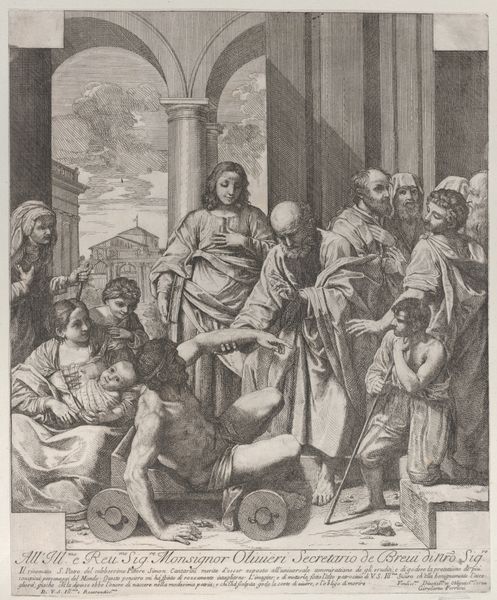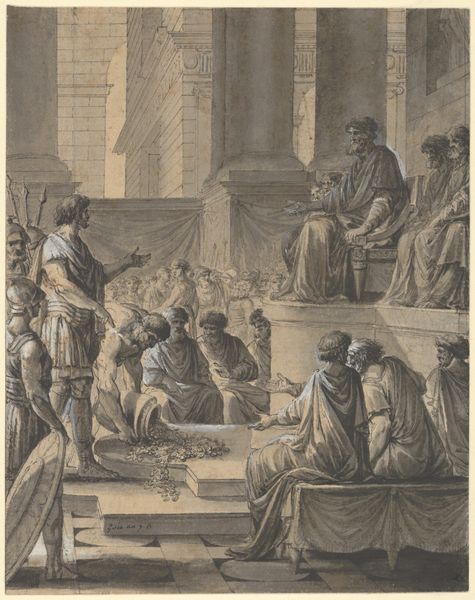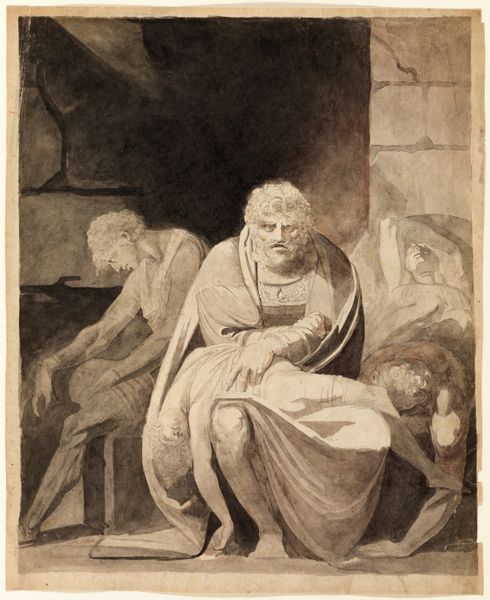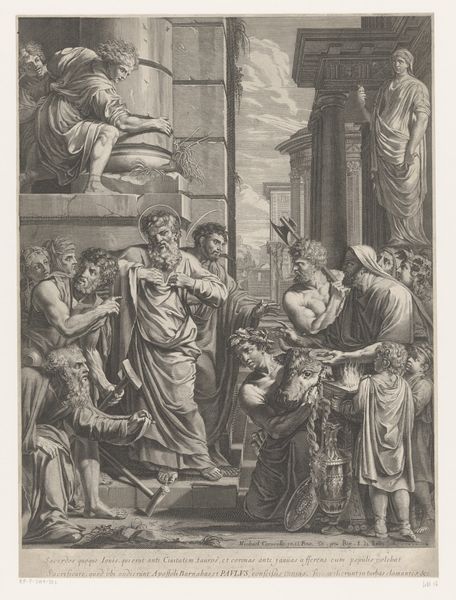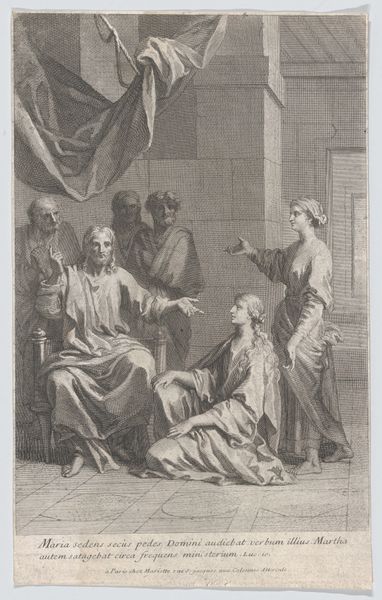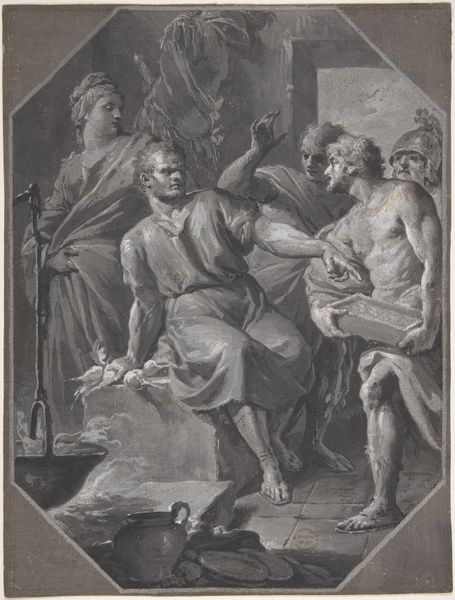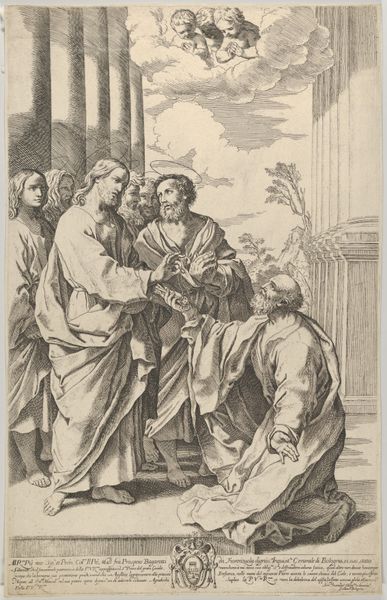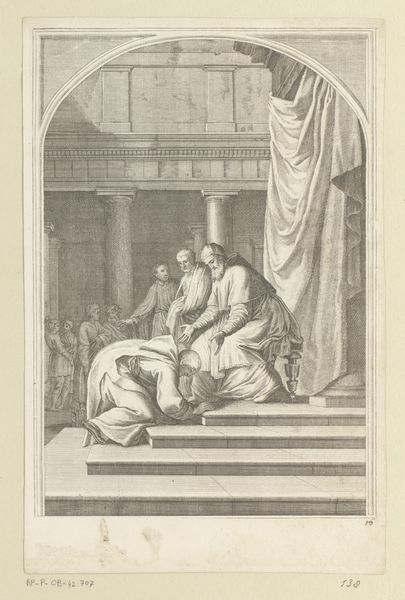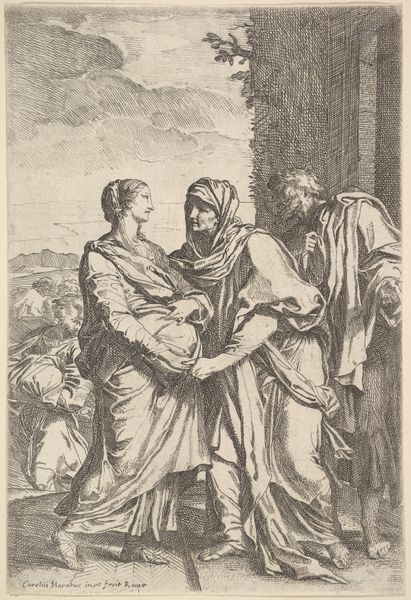
Copyright: Public Domain
Curator: This drawing, entitled "Eine Lazzaroni-Familie in Neapel" or "A Lazzaroni Family in Naples," was created by Johann Heinrich Lips in 1787. The piece, which we can appreciate here at the Städel Museum, features chalk and ink on paper. Editor: My first impression is one of somber observation. The limited color palette lends a subdued, almost melancholic air, while the subjects' poses evoke a sense of weariness and resignation. There is definitely some theatricality going on. Curator: Interesting observation! It is, in fact, an excellent depiction of the Lazzaroni class in 18th-century Naples. They were known as the poorest, the most idle class of people; and as Lips worked and lived between Italy and Switzerland, this reflects his insight on marginalized figures in society. We must consider what drove Lips to depict their plight. Were these images used in travel literature or pamphlets with the aim of spreading particular ideas or images of the Italian city? What types of commissioned drawings were common at that time? Editor: It strikes me how Lips uses classical composition techniques to elevate his subject, wouldn't you say? Despite their humble status, there's a conscious effort to portray them with a certain dignity. Look at the central figure: draped in what appears to be simple fabric, his stance almost mirrors that of a Greek philosopher. How does Lips work with his materials, particularly ink and chalk, to evoke certain textural effects that contrast poverty with a timeless monumentality? The subtle blending of tones and the attention to the folds of the fabrics lend a painterly feel, defying the presumed limitations of his chosen medium. Curator: Lips' skill shines through. The means through which he represented common people provides a fascinating reflection on class consciousness and the romantic lens through which people can idealize poverty. How and why artists like Lips started giving attention to these classes tells us more about social structure, labor practices, and economy of that time. It challenges art to be more than portraiture, more than representation. It seeks, even through visual interpretation, ways of prompting viewers towards new socio-economical ideas. Editor: A nuanced, almost defiant statement expressed through compositional control and calculated artistic choices, ultimately transforming everyday subjects into figures of significance. Curator: Exactly. An examination of his method challenges our perceptions and perhaps compels reflection on similar contemporary issues, don't you agree? Editor: Absolutely. It makes us appreciate the layers beneath what first seems to be a simple tableau, and discover how technique itself is a tool to both reveal and critique social conditions.
Comments
No comments
Be the first to comment and join the conversation on the ultimate creative platform.
